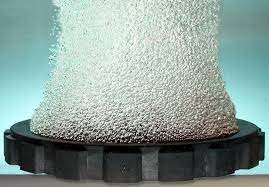Observer
Quantum Yield Engineer
- Joined
- May 11, 2023
- Messages
- 8,132
- Reaction score
- 19,958
""The H2O2 is very unstable in its current form and quickly breaks down once in the nutrient solution. Essentially, within a short space of time it’s present only in its component form, and in reaching this form it releases a single oxygen atom. This oxygen atom is ultra-reactive as well as aggressive"How long does the O2 last in the media? It's a gas right? If organic matter is what converts H2O2 to O2 could you pour it into unplanted potting mix to raise o2 levels in the media?
i think pressure is what helps keep it stable, as in when its sealed, once its opened and poured AND finds organic matter 1 oxygen atom is released


